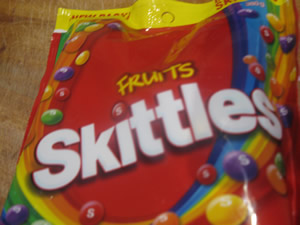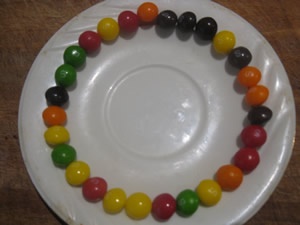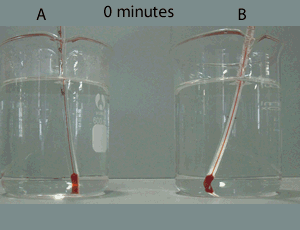Have fun with this Skittle demo.
Watch as your skittles grow tails.

Diffusion occurs when a substance spreads out and moves from an area of high concentration to an area of lower concentration. This happens only with liquids or gases.
Explain using particle theory why diffusion does not occur in solids?
To see how food colouring diffuses in water place Skittles in a circle in a plate, as shown on the right.

Pour warm water in the middle until part of each Skittle is in contact with the water.
Explain why the colour pattern occurs using particle theory.
Explain what will happen if hot water is used instead of warm or cold water.
Diffusion of food dye is shown in the animation on the right. It is obvious how the food dye particles move to occupy the entire volume of the water in one beaker while the other is slower to achive the same result.
Describe what is happening in each beaker to achieve different results.
Consider the animation on the right of particles diffusing from an area of high concentration to areas of low concentration at 20 oC.
Describe how the behaviour of the particles would change if this was filmed at a higher temperature of say 100oC.
sourced from https://www.youtube.com/watch?v=qBig2wevHhw at4.55pm 22/08/20
